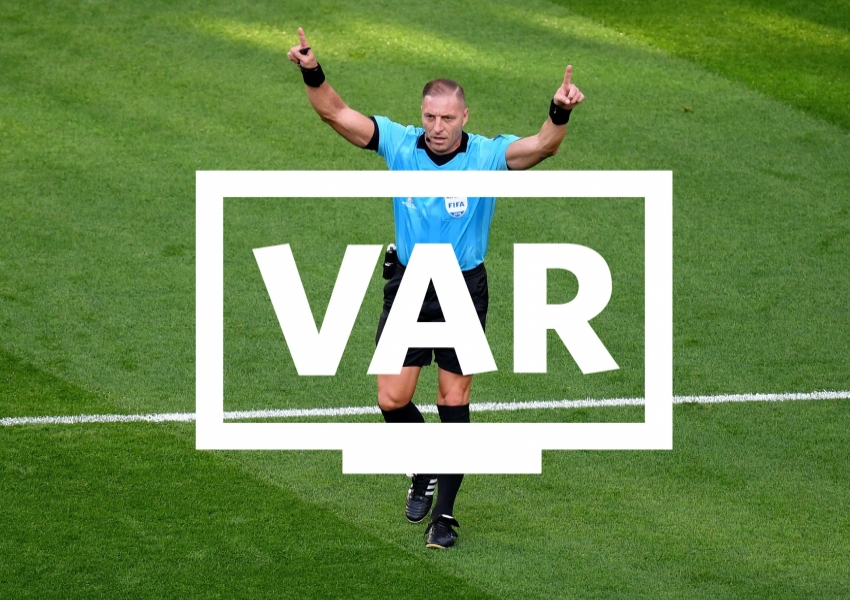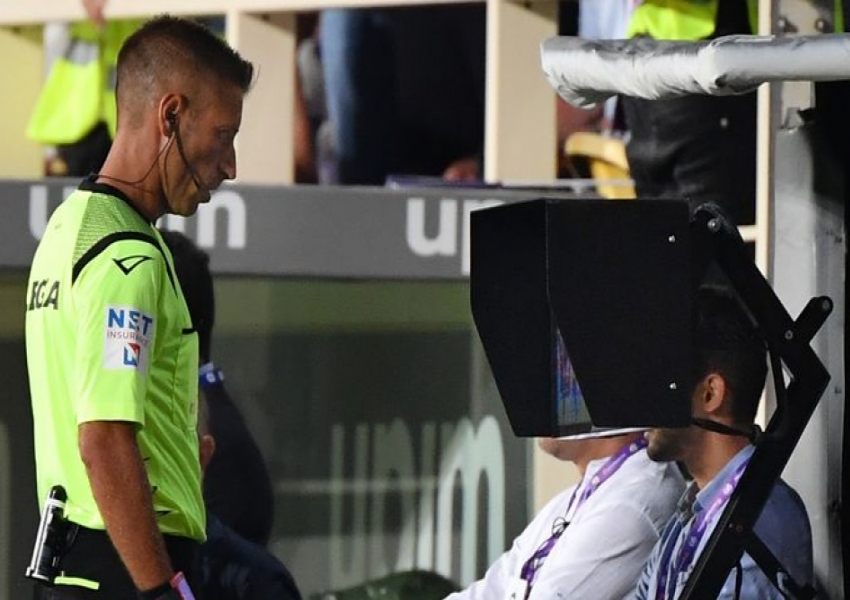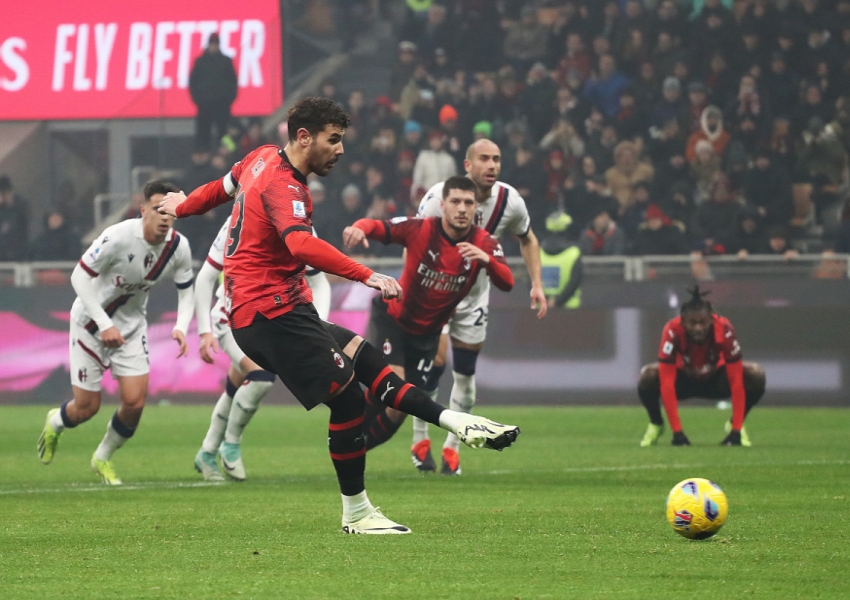Serie A’s VAR Influence Far Outweighs the Premier League: Is Inter Milan Truly the Biggest Beneficiary?
In the wake of Inter Milan's contentious clash with Napoli, Inter’s head coach Antonio Conte sparked a national debate in Italy, criticizing the application of VAR in Serie A. Conte’s frustration stemmed from what he perceived as a misjudgment when Napoli was awarded a penalty in a questionable situation. His comments on VAR's limitations in correcting referee decisions ignited broader discussions on VAR’s implementation, influence, and impact across Serie A, especially in contrast with the English Premier League. In this analysis, we’ll look closely at Conte’s criticism, VAR’s role and effectiveness in Serie A compared to other major European leagues, and the common claim that Inter Milan is benefiting most from officiating decisions this season.

Conte’s Critique of VAR: Misguided or Justified?
Conte’s comments followed the match in which Napoli received a penalty in a situation that, according to Conte, lacked clear grounds. Conte alleged that VAR “failed to intervene in an obvious mistake” and should have overruled the decision. However, the officiating team’s explanation clarified the basis for the penalty: Napoli’s André-Frank Zambo Anguissa made contact with Inter’s Marcus Thuram, albeit slight, and the on-field referee, positioned well to see the incident, judged the contact sufficient for a foul. VAR confirmed that contact had indeed occurred and, therefore, refrained from overruling the decision, as no clear “error” in judgment was deemed present.

Conte’s outburst centered on the argument that the penalty was entirely unjustified and that VAR’s failure to correct it revealed a systemic flaw. However, experts in Italian media argue that Conte’s comments oversimplify the role of VAR and ignore the reality of referee discretion. The Italian referees’ association reviewed the decision post-match and found the referee’s ruling acceptable given the visible contact, explaining that VAR’s role in this context is not to dispute subjective judgment on contact, especially when a referee is well-positioned. As noted by Pierluigi Collina, an influential figure in officiating, the primary purpose of VAR is to correct blatant errors, not to intrude upon referees’ interpretative decisions regarding “degree of contact.”

The Italian press generally saw Conte’s statements as a strategy to rally fan support and steer public opinion, as many believed his remarks intended to project Inter as victims of officiating inconsistency. Giuseppe Marotta, Inter’s sporting director, pointed out that Conte is a “master of creating narratives” to shape public perception, and it’s likely his words here served a similar purpose.
VAR’s Role in Serie A: Higher Frequency and Precision with Drawbacks
Serie A’s use of VAR stands out not only for its frequency but also for its rigor in handling match-altering decisions. Across the first 12 rounds, Serie A has already witnessed 42 penalties and 16 red cards, half of which involved VAR intervention. With an average of 0.18 penalties per match, Serie A leads in penalty frequency over La Liga (0.16) and the Premier League (0.09). Likewise, the league’s red card rate—0.13 per match—significantly surpasses the Premier League’s 0.08. This frequent use of VAR is coupled with a remarkable accuracy rate, as officiating errors are rare compared to some other leagues. Despite the high rate of intervention, Serie A has not seen high-profile errors like the controversial Bruno Fernandes decision in the Premier League, suggesting that VAR’s impact is, overall, precise.
Yet, these statistics also underscore potential issues. According to a report in La Gazzetta dello Sport, VAR in Serie A has several significant side effects:
- Extended Stoppage Time: With more frequent VAR checks, Serie A matches have seen longer stoppage times, often the highest across major European leagues.
- Disruption of Game Flow: Some referees have developed a tendency to defer to VAR instead of making assertive in-game decisions. This reliance disrupts the natural rhythm of play and contributes to disjointed match flow.
- Fan Experience and Engagement: The delay in decision-making affects fans' immediate emotional response, a universal issue in leagues using VAR, but notably more pronounced in Serie A given the frequency of interventions.
Serie A fans have increasingly voiced frustration with these side effects, and some commentators argue that VAR has turned football into a “video-revised sport” that loses spontaneity. Still, supporters of Serie A’s strict application claim that, despite drawbacks, the benefits in terms of fairness and accuracy outweigh these downsides, especially when compared to leagues where officiating controversies have cast doubt on the reliability of VAR decisions.
Does Inter Milan Gain the Most from Refereeing and VAR?
Amid the growing role of VAR in Serie A, Inter Milan’s positioning as one of the league’s strongest teams has fueled a narrative that they are primary beneficiaries of officiating decisions. But a closer look at the key statistics across the league’s top seven teams suggests a more nuanced reality.
Across the first 12 rounds, here’s how these teams fare in terms of penalties and red cards:
- Napoli: Awarded 2 penalties, conceded 2; no red cards for themselves, while opponents received 1.
- Juventus: Awarded 1 penalty, conceded 3; received 1 red card, while opponents received 1.
- Atalanta: Awarded 3 penalties, conceded none; no red cards for themselves, while opponents received 1.
- Fiorentina: Awarded 4 penalties, conceded 2; received 1 red card, while opponents received 3.
- Inter Milan: Awarded 4 penalties, conceded 2; no red cards for themselves, while opponents received 2.
- Lazio: Awarded 3 penalties, conceded 2; received 2 red cards, while opponents received 4.
- AC Milan: Awarded 4 penalties, conceded 1; received 3 red cards, while opponents received 1.
These numbers reveal that Inter Milan is not overwhelmingly advantaged by refereeing calls. For example, Atalanta has the most favorable penalty balance, while AC Milan’s penalty-to-red-card ratio suggests they’ve encountered harsher officiating decisions. Inter’s standing is relatively average: while they have received four penalties, other top teams have benefitted from similarly favorable calls. Furthermore, Inter’s lack of red cards can partly be attributed to manager Simone Inzaghi’s cautious substitution strategy, frequently removing players at risk of a second yellow card, rather than benefitting from any officiating bias.
Evaluating VAR’s Role in Serie A: Comparative Insights
Compared to the Premier League and La Liga, Serie A has taken a stringent approach to VAR. The league has implemented VAR interventions at nearly double the rate seen in the Premier League, totaling 565 instances over the first 12 rounds, compared to the Premier League’s 283 interventions. While this high usage has successfully minimized officiating errors, it also contributes to the lengthened stoppage times and disruptions noted by La Gazzetta dello Sport.
In contrast, the Premier League’s conservative use of VAR has resulted in fewer penalties and red cards, but also more glaring errors, as seen in high-profile cases this season. La Liga, with its moderate VAR use, finds itself balancing fewer interruptions with a similar level of accuracy. Serie A’s unique approach has elevated its reputation for officiating precision, but the frequency and pace of interventions have left some fans feeling distanced from the fluidity and excitement of the sport.
Conte’s remarks about VAR, while polarizing, illustrate a broader debate within European football: Should VAR intervene only for clear and obvious errors, or should it adapt to varying contexts to reflect referees’ subjective interpretations? For Serie A, where VAR’s role is firmly established, maintaining this balance while managing fan experience and game flow will be crucial.
In sum, the notion that Inter Milan is VAR’s “biggest beneficiary” is largely a myth unsupported by the broader league data. The discussion on VAR’s role, however, continues to resonate, with Serie A’s approach standing out as the most intensive and meticulous among the big five European leagues.
Copyright Statement:
Author: mrfootballer
Source: Mrfootballer
The copyright of this article belongs to the author. Reproduction is not allowed without permission.
Recommended Blog
- Serie A Top Clash: Lukaku and Lautaro Struggle as Zero-Shot Stars, But for Different Reasons
- Premier League Round 11: Chelsea Seeks First Victory over Arsenal in Three Years, Manchester United Hopes to Bid Van Nistelrooy Farewell with a Win
- “Expo of the Exes” in Inter Milan vs. Napoli Showdown: Nerazzurri’s Offensive Weapon Zielinski Faces His Former Club
- La Liga Round 13: Real Madrid Scouting Joselu’s Successor, Villarreal Improving Point Collection Efficiency
- Capello Highlights Inzaghi's Tactical Growth: Serie A's New Master of Squad Rotation
- Bundesliga Round 10: Union Berlin’s Scoring Woes and Leverkusen’s Battle to Overcome Setbacks
- Star Visitor Brings Good News to San Siro as Inter’s Rising Talent Sees 500% Value Surge in One Year
- UEFA Praises Inter Milan: "European Shield" Undaunted by Premier League, Ironclad Defense Leaves Arsenal Struggling Outside the Box
- Europa League Round 4: Lazio's Fiery Matches and Hoffenheim's Star Striker Hopes to Rekindle Past Glory
- Inter Milan vs. Arsenal: Potential Rotation as Conte’s Shadow Looms Over the Nerazzurri
Hot Blog
- Man City’s 21-Year-Old Star Returns Home as a Hero! Receives $350,000 Mercedes, Gifts It to His Father
- 175 Days on the Sidelines! Barça’s 32-Year-Old Guardian Dreams of a Champions League Comeback
- English Media: Manchester United Will Win Premier League Title in 2028! History Will Repeat Itself, Two Teams Serve as Inspirations
- 4 AM Showdown: Barcelona's Revenge Match! Win = 3-Point Lead Over Real Madrid, Key Players Rested
- 0-2 Double Defeat! China National Team Stuck at 6 Points: No More Direct World Cup Hopes, Two Crucial Matches Ahead
- China National Football Team Drops 13.6 Points, Slips to 94th in FIFA Rankings: Syria Overtakes, New 9-Year Low
- 0-0 Draw! Japan 12 Shots, 2 Missed One-on-Ones: 8 Matches, 20 Points, Group Winner, Saudi Arabia Stuck at 10 Points in 3rd
- 4-1, Double Win Over Brazil! Argentina Celebrates: World Cup Qualification Secured, 4th Team Globally to Qualify
- Real Madrid Got Lazy: 7 Kilometers Less Running in UCL! Two Superstar Spectators While Barça Outruns Them All
- Champions League Classic: Barça’s Midfield Maestro Worshipped by Thousands After 11.5KM Marathon